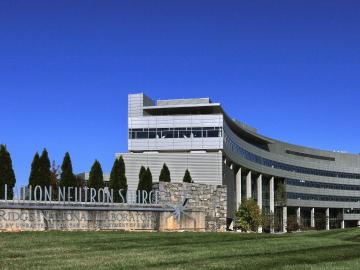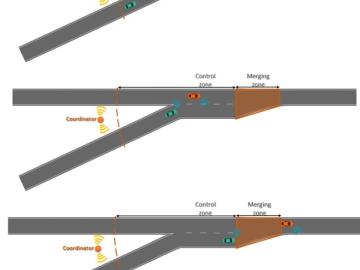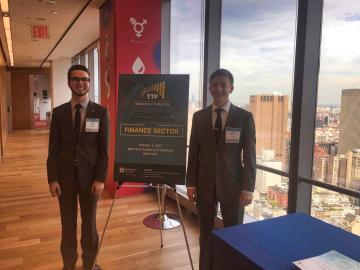
Filter News
Area of Research
- Advanced Manufacturing (2)
- Biology and Environment (6)
- Energy Science (35)
- Fuel Cycle Science and Technology (1)
- Fusion and Fission (4)
- Fusion Energy (5)
- Isotopes (2)
- Materials (28)
- Materials for Computing (4)
- National Security (8)
- Neutron Science (36)
- Nuclear Science and Technology (24)
- Nuclear Systems Modeling, Simulation and Validation (2)
- Sensors and Controls (1)
- Supercomputing (23)
News Topics
- (-) Advanced Reactors (15)
- (-) Artificial Intelligence (9)
- (-) Big Data (12)
- (-) Frontier (1)
- (-) Neutron Science (45)
- (-) Nuclear Energy (41)
- (-) Polymers (12)
- (-) Security (10)
- (-) Transportation (22)
- 3-D Printing/Advanced Manufacturing (33)
- Bioenergy (15)
- Biology (6)
- Biomedical (27)
- Biotechnology (2)
- Buildings (1)
- Chemical Sciences (5)
- Clean Water (3)
- Composites (4)
- Computer Science (53)
- Coronavirus (25)
- Critical Materials (3)
- Cybersecurity (7)
- Energy Storage (23)
- Environment (32)
- Exascale Computing (3)
- Fusion (17)
- Grid (10)
- High-Performance Computing (3)
- Isotopes (14)
- Machine Learning (8)
- Materials (2)
- Materials Science (47)
- Mathematics (2)
- Mercury (2)
- Microscopy (13)
- Molten Salt (6)
- Nanotechnology (26)
- National Security (2)
- Physics (22)
- Quantum Science (17)
- Space Exploration (4)
- Summit (19)
Media Contacts

Scientists from Oak Ridge National Laboratory performed a corrosion test in a neutron radiation field to support the continued development of molten salt reactors.

Thought leaders from across the maritime community came together at Oak Ridge National Laboratory to explore the emerging new energy landscape for the maritime transportation system during the Ninth Annual Maritime Risk Symposium.

The Spallation Neutron Source at the Department of Energy’s Oak Ridge National Laboratory has broken a new record by ending its first neutron production cycle in fiscal year 2019 at its design power level of 1.4 megawatts.

Carbon fiber composites—lightweight and strong—are great structural materials for automobiles, aircraft and other transportation vehicles. They consist of a polymer matrix, such as epoxy, into which reinforcing carbon fibers have been embedded. Because of differences in the mecha...

Self-driving cars promise to keep traffic moving smoothly and reduce fuel usage, but proving those advantages has been a challenge with so few connected and automated vehicles, or CAVs, currently on the road.

Scientists at the Department of Energy’s Oak Ridge National Laboratory used neutrons, isotopes and simulations to “see” the atomic structure of a saturated solution and found evidence supporting one of two competing hypotheses about how ions come

If you ask the staff and researchers at the Department of Energy’s Oak Ridge National Laboratory how they were first referred to the lab, you will get an extremely varied list of responses. Some may have come here as student interns, some grew up in the area and knew the lab by ...

The United Kingdom’s National Nuclear Laboratory and the U.S. Department of Energy’s Oak Ridge National Laboratory have agreed to cooperate on a wide range of nuclear energy research and development efforts that leverage both organizations’ unique expertise and capabilities.

Long-haul tractor trailers, often referred to as “18-wheelers,” transport everything from household goods to supermarket foodstuffs across the United States every year. According to the Bureau of Transportation Statistics, these trucks moved more than 10 billion tons of goods—70.6 ...

As technology continues to evolve, cybersecurity threats do as well. To better safeguard digital information, a team of researchers at the US Department of Energy’s (DOE’s) Oak Ridge National Laboratory (ORNL) has developed Akatosh, a security analysis tool that works in conjunctio...


